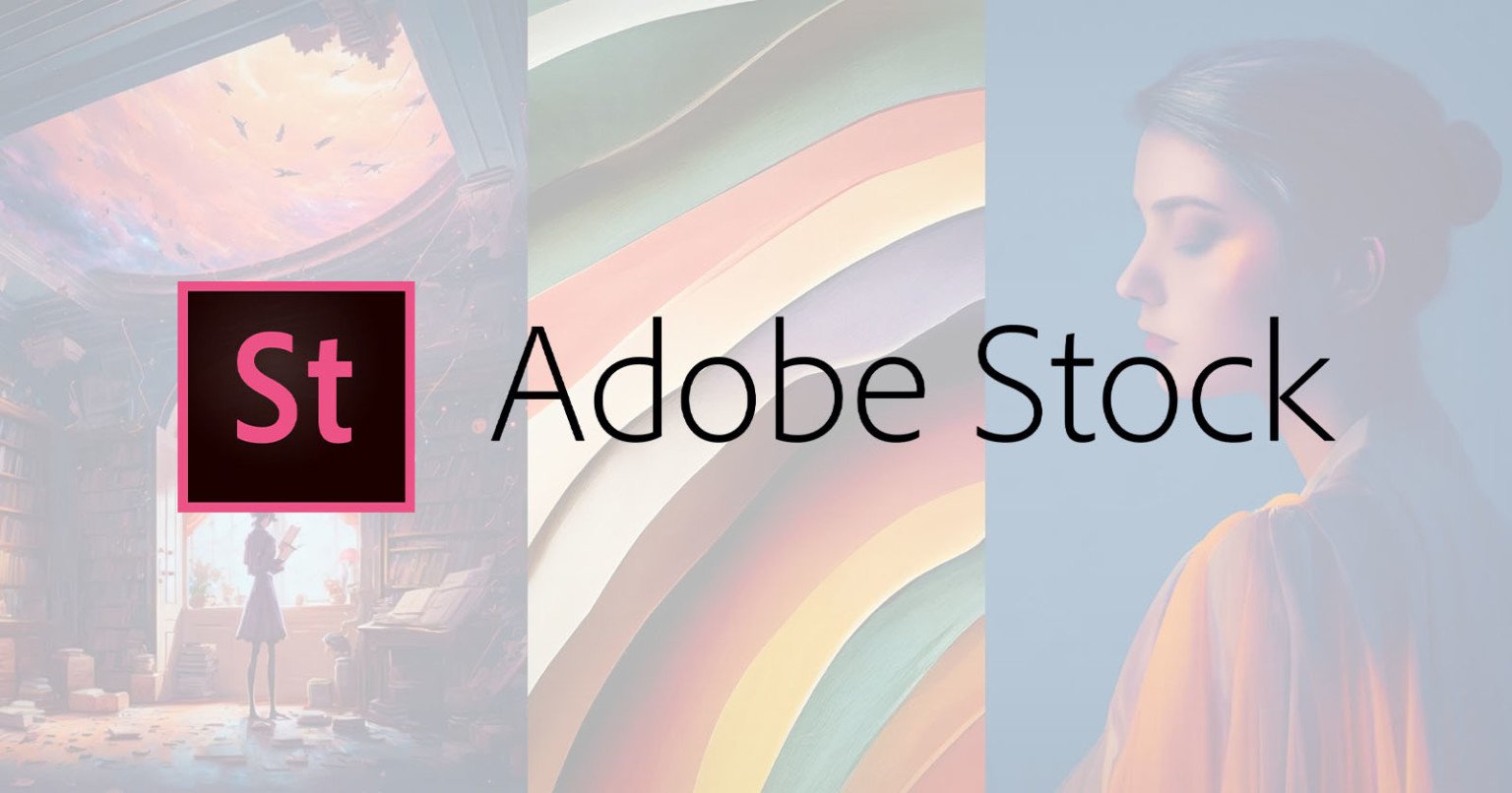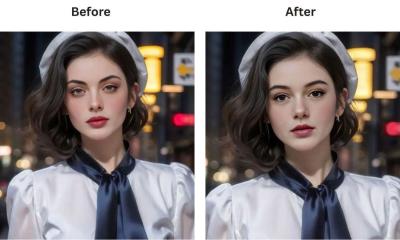Welcome to the exciting world of AI art! As technology advances, digital creativity has taken a new turn, allowing artists to harness AI tools to generate stunning visuals. Adobe Stock, a leading marketplace for high-quality images, is a fantastic platform for selling these creations. Whether you're an experienced artist or just starting out, understanding how to effectively sell your AI art on Adobe Stock can open up new avenues for revenue and exposure!
Understanding the Market for AI Art
Before diving into the selling process, it’s crucial to grasp the current market dynamics for AI art. The demand for unique, innovative visuals is booming, and AI-generated content is at the forefront of this trend. Here are some key points to consider:
- Growing Popularity: As brands and creators look for distinctive images, AI art is becoming a sought-after asset. From social media campaigns to online advertisements, companies are increasingly using AI-generated visuals to stand out.
- Diverse Applications: AI art can be used in various fields, including marketing, publishing, and even gaming. Understanding these applications can help you tailor your artwork to meet specific market needs.
- Audience Awareness: The audience for AI art ranges from tech enthusiasts to creative agencies. Knowing who your potential buyers are can guide your creative process and marketing strategies.
To effectively tap into this market, consider the following strategies:
- Research Trends: Keep an eye on trending styles and themes in the digital art community. This could mean exploring abstract designs, surreal landscapes, or even character illustrations. Use platforms like Instagram, Pinterest, and even Adobe’s own marketplace to see what’s popular.
- Quality Over Quantity: While it’s tempting to create a large volume of art, focus on crafting high-quality pieces that resonate with your audience. Stunning visuals are more likely to sell than generic ones.
- Optimize for Search: When uploading your art to Adobe Stock, use relevant keywords and descriptions. Think about what buyers might search for and incorporate those terms to improve visibility.
Additionally, consider the legal aspects surrounding AI art. Although the technology allows for incredible creativity, it’s essential to understand copyright laws and ensure your work doesn’t infringe on existing copyrights. Always create original pieces or use licensed elements to avoid potential legal issues.
In conclusion, the market for AI art is vibrant and full of opportunities. By understanding the landscape and strategically positioning your work, you can effectively sell your AI creations on Adobe Stock and beyond. So, get those creative juices flowing and start exploring the possibilities!
Also Read This: Understanding Getty Images API Pricing for Developers
3. Preparing Your AI Art for Submission
So, you’ve created some stunning AI art that you’re excited to share with the world! Before you hit the submit button on Adobe Stock, let’s make sure your artwork is in tip-top shape. Proper preparation can significantly increase your chances of making sales, so here’s how to do it:
1. Optimize Your Images
Your images need to be high quality to attract buyers. Here are some tips:
- Resolution: Aim for at least 4 megapixels. This ensures your buyers can use your art for various purposes without compromising quality.
- Format: Save your images in JPEG format, as it's the most widely accepted. Ensure the compression settings maintain the visual quality of your piece.
- Color Profile: Use RGB color profiles, as they are best suited for online viewing.
2. Refine Your Art
Before submission, take a moment to review and refine your artwork:
- Look for imperfections: Even AI-generated art can have glitches. Zoom in and check for any artifacts or unwanted elements.
- Enhance with editing tools: Consider using software like Photoshop or GIMP to add finishing touches, such as color adjustments or cropping.
3. Metadata Matters
Metadata is like the secret sauce for your art’s discoverability. When you submit your pieces, you’ll need to provide:
- Titles: Use clear, descriptive titles that outline what’s in your artwork.
- Keywords: Think from the buyer's perspective. What words would they search for? Use relevant terms, and don’t shy away from using synonyms.
- Categories: Choose appropriate categories that fit your art style, whether it’s abstract, landscape, or illustrations.
By focusing on these aspects, you can ensure your AI art is not only ready for submission but also more appealing to potential buyers. Remember, the more effort you put into preparing your art, the better your chances of making those sales!
Also Read This: How to Create a Stunning Portfolio on Behance
4. Creating an Adobe Stock Account
Ready to start selling your AI art? The next step is to create your Adobe Stock account. Don’t worry; the process is straightforward and only takes a few minutes. Here’s how to get started:
1. Visit the Adobe Stock Website
Open your web browser and go to the Adobe Stock homepage. You’ll find all the information you need to get started.
2. Sign Up for an Account
If you don’t already have an Adobe account, you’ll need to create one. Here’s a quick rundown:
- Click on 'Sign In': You’ll see this button in the top right corner. If you already have an Adobe account, simply log in.
- Create a New Account: If you’re new, click on the option to create a new account. Fill in the necessary details like your email, password, and name.
3. Choose Your Contributor Type
When you sign up, you’ll have to select whether you want to be a contributor or a buyer. Be sure to select “Contributor” to sell your art.
4. Complete Your Profile
After signing up, it's important to complete your profile. This includes:
- Payment Information: Set up how you want to get paid. Adobe Stock offers options like PayPal or direct bank transfers.
- Tax Information: Depending on your location, you may need to provide tax-related information to comply with regulations.
Now that you have your Adobe Stock account ready, you’re one step closer to turning your creativity into income!
Also Read This: How to Unsubscribe from Adobe Stock
5. How to Upload Your AI Art to Adobe Stock
So, you’ve created some stunning AI art and you’re ready to share it with the world! Uploading your artwork to Adobe Stock can be a breeze if you follow a few straightforward steps. Let's break it down.
Step 1: Create an Adobe Stock Contributor Account
Before you can upload your masterpieces, you need a Contributor account. Head over to the Adobe Stock website and sign up. It’s a simple process: you’ll need to provide some basic information and agree to the terms. Once you have your account, you’re good to go!
Step 2: Prepare Your Files
Adobe Stock has specific requirements for images. Make sure your AI art is in a high-resolution format (at least 4 MP) and in either JPEG or AI format. A good practice is to keep your files organized. Name your files descriptively, as this will help potential buyers find your work.
Step 3: Upload Your Art
Log into your Contributor account, and navigate to the “Upload” section. You can drag and drop your files, or select them manually. Adobe allows batch uploads, so feel free to upload multiple pieces at once!
Step 4: Add Titles and Keywords
Once your files are uploaded, it’s time to add titles, descriptions, and keywords. Think like a buyer: What terms would they use to find your artwork? Use relevant keywords that accurately describe your art. This is crucial for searchability!
- Title: Keep it clear and engaging.
- Description: Provide context or inspiration behind your piece.
- Keywords: Use 5-50 keywords that describe different aspects of your artwork.
Step 5: Set Your Pricing
Adobe Stock allows you to set your pricing structure. Familiarize yourself with their pricing models to ensure you’re competitive while also valuing your work. It’s a balancing act!
Step 6: Submit for Review
After everything is filled out, click on the “Submit for Review” button. Your artwork will go through a quality check. Once approved, your art will be live on Adobe Stock, ready for customers to purchase!
Also Read This: Quick Tips to Copy Images from PDFs
6. Best Practices for Selling AI Art
Now that you’ve uploaded your AI art, let’s talk about how to maximize your sales! Selling art effectively is not just about having great pieces; it’s about strategy. Here are some best practices to help you succeed:
1. Understand Your Audience
Who are you selling to? Are they designers, marketers, or everyday consumers? Knowing your audience helps tailor your artwork to their preferences. For instance, if you know that designers love abstract designs, focus on creating more in that style.
2. Market Your Art
Don’t wait for buyers to come to you! Promote your art on social media platforms like Instagram or Pinterest. Share behind-the-scenes looks at your creative process, and engage with your followers. Consider creating a dedicated website or blog to showcase your portfolio.
3. Keep Up with Trends
AI art is constantly evolving, and so are design trends. Stay updated on what’s popular in the digital art community. Websites like Behance and Dribbble can be great resources for spotting trends. For instance, if you notice that pastel colors are trending, try creating pieces that incorporate those hues.
4. Use High-Quality Previews
When customers browse Adobe Stock, the first thing they see is the preview of your art. Make sure your thumbnails are eye-catching and representative of your work. A compelling preview can significantly increase your chances of a sale.
5. Engage with the Community
Don’t isolate yourself! Join forums, social media groups, or attend workshops related to AI art. Building relationships with other artists can lead to collaborations and increased visibility for your work.
6. Regularly Update Your Portfolio
Consistency is key. Regularly add new pieces to your portfolio to keep it fresh. This not only attracts new customers but also showcases your growth as an artist. Consider seasonal themes or relevant events to keep your artwork timely and appealing.
By following these best practices, you can turn your passion for AI art into a successful venture on Adobe Stock. Happy selling!
Also Read This: Downloading Purchased Images from Adobe Stock Easily
7. Marketing Your AI Art Beyond Adobe Stock
So you've uploaded your stunning AI art to Adobe Stock, and you're waiting for the sales to roll in. But here's the kicker: relying solely on Adobe Stock is like fishing in a small pond. To really make a splash, you need to cast your net wider! Let’s dive into some effective strategies to market your AI art beyond Adobe Stock.
Social Media Magic
One of the easiest ways to showcase your art is through social media platforms. Sites like Instagram and Pinterest are visual-centric and can help you reach a broader audience. Consider these tactics:
- Engaging Posts: Share behind-the-scenes videos of your creative process or quick tips on how to create AI art.
- Hashtags: Use relevant hashtags like
#AIArt,#DigitalArt, and#ArtForSaleto enhance discoverability. - Collaborations: Partner with other artists or influencers for shout-outs or collaborative projects.
Building a Personal Website
Having a personal website is like owning your gallery. You can showcase your portfolio, provide background on your art, and even include a blog where you discuss your artistic journey and the techniques you use. Make sure to:
- Optimize for SEO: Use keywords related to AI art and your niche to attract organic traffic.
- Include a Shop: Integrate an e-commerce section where visitors can purchase prints or licenses directly from you.
- Newsletter Sign-Up: Encourage visitors to subscribe to your newsletter for updates on new art and exclusive offers.
Networking and Community Engagement
Join online forums and communities focused on digital art. Engage in discussions, share your work, and provide constructive feedback to others. Websites like DeviantArt and ArtStation are great platforms to connect with like-minded creatives.
Don't forget about local art fairs or exhibitions! Physical presence can create valuable connections and opportunities. You can even host workshops to demonstrate your AI art process.
8. Tracking Sales and Performance Metrics
Understanding how your AI art is performing is key to making informed decisions. While Adobe Stock provides some analytics, tracking sales and performance metrics on your own can give you a clearer picture of what’s working and what’s not.
Utilizing Adobe Stock Analytics
First and foremost, be sure to regularly check Adobe Stock’s built-in analytics. You can track:
- Total Sales: Keep an eye on your overall sales to gauge your art's popularity.
- Top-performing Assets: Identify which pieces are selling the best, so you can create similar works in the future.
- Visitor Trends: Look at how many people are viewing your art and how this changes over time.
Google Analytics for Your Website
If you’ve built a personal website, integrating Google Analytics can provide invaluable insights. It allows you to track:
- Traffic Sources: See where your visitors are coming from (social media, search engines, etc.) to tailor your marketing strategies.
- User Behavior: Understand how users interact with your site—what pages they visit and how long they stay.
- Conversion Rates: Monitor how many visitors are making purchases or signing up for your newsletter.
Setting Up Custom Goals
In Google Analytics, set up custom goals to track specific actions, such as downloads of your art or newsletter sign-ups. This will help you assess the effectiveness of your marketing efforts and identify areas for improvement.
Regular Review and Adjustments
Finally, make it a habit to review your metrics regularly—perhaps monthly or quarterly. Look for patterns in your sales data and adjust your strategies accordingly. If you notice certain styles or themes are resonating more with your audience, consider focusing on those in your future work.
By effectively marketing your AI art and tracking your sales performance, you’ll be well on your way to building a successful digital art business! Happy creating!

 admin
admin








